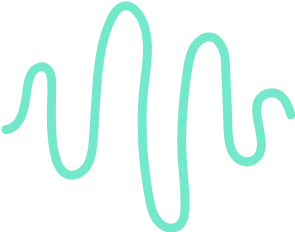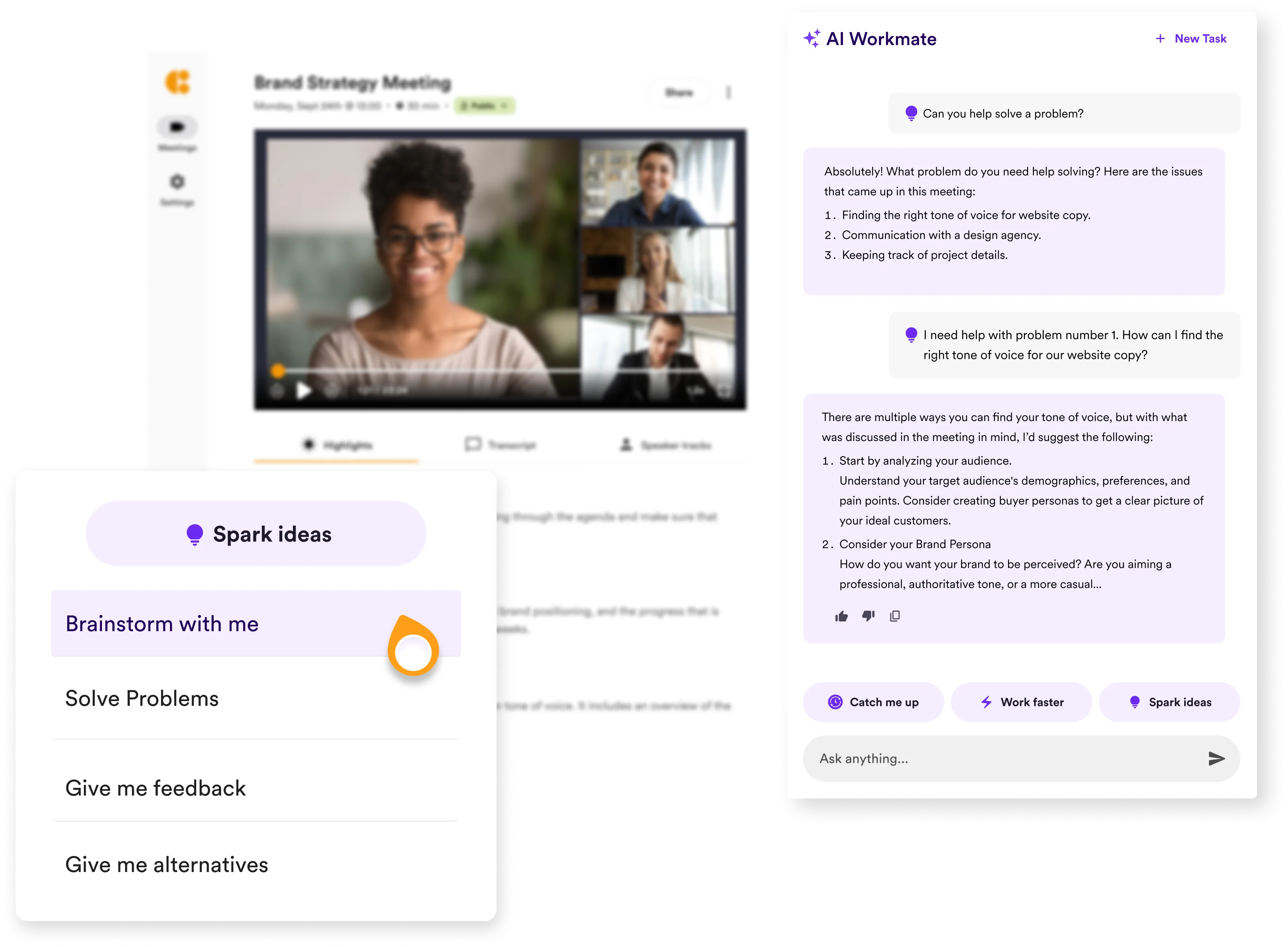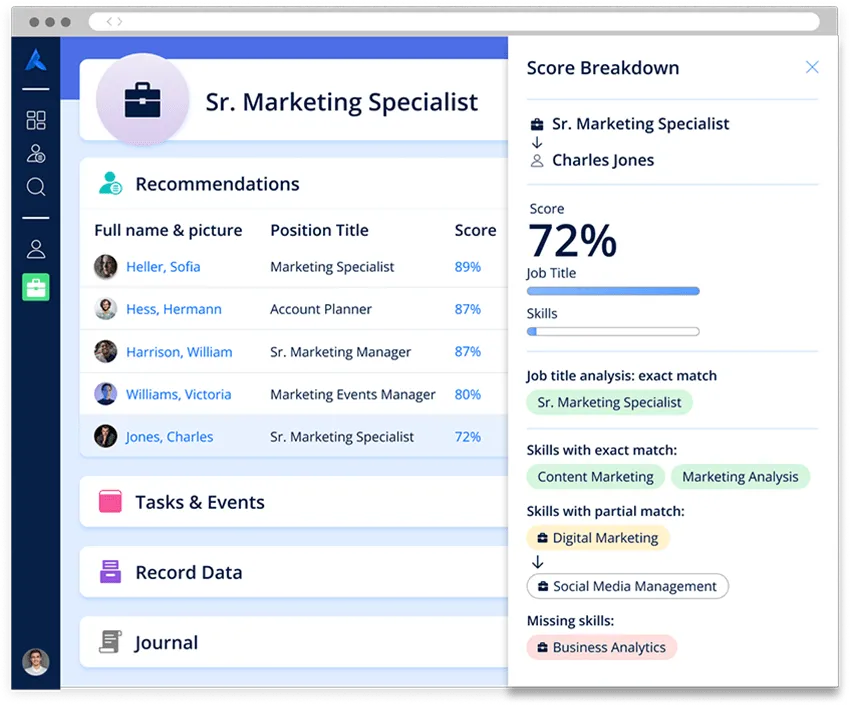How to Be a Good Interviewer : a Guide

As a recruiter or manager, the ability to conduct insightful and fair interviews is crucial for building a successful team.
Yet, many interviews fall short due to lack of structure, preparation, and the right tools.
This guide will show you how to enhance your interviewing skills with practical tips and powerful tools designed to optimize every step of the interview process.
What Makes a Good Interviewer vs. Bad Interviewer?
A good interviewer can make a significant difference in the hiring process. They help uncover the best candidates and ensure a positive experience for all involved. On the other hand, a bad interviewer can lead to poor hiring decisions and leave candidates with a negative impression of your company.
Let’s see the telltale signs of good and bad interviewers.
1. Preparation
Good Interviewer :A good interviewer prepares thoroughly for each interview. They review the candidate’s resume, cover letter, and any other submitted materials. They also research the candidate’s background and tailor their questions to gain deeper insights into the candidate’s qualifications and fit for the role. They create a list of specific questions that relate to the job requirements and the candidate’s experience.
Bad Interviewer:A bad interviewer comes unprepared. They might skim the candidate’s resume just before the interview or not at all. This lack of preparation results in generic questions and missed opportunities to explore the candidate’s potential fully. They often struggle to keep the interview focused and relevant.
2. Questioning
Good Interviewer: Good interviewers ask relevant and insightful questions. They focus on open-ended questions that encourage candidates to elaborate on their experiences and skills. These questions are designed to reveal how candidates think, solve problems, and handle various situations. They follow a structured interview format to ensure consistency and fairness.
Bad Interviewer: Bad interviewers often rely on generic or inappropriate questions. They might ask yes/no questions or those that do not relate to the role. This approach can prevent them from understanding the candidate’s true abilities and fit for the team. They may also ask illegal or unethical questions that could lead to discrimination claims.
3. Listening
Good Interviewer: Active listening is a hallmark of a good interviewer. They pay full attention to the candidate’s responses, maintain eye contact, and use body language to show engagement. They follow up on interesting points and clarify when necessary. They take notes to capture key information and ensure they remember important details.
Bad Interviewer: A bad interviewer interrupts or dominates the conversation. They may not fully listen to the candidate’s answers and can miss important information. This behavior can make candidates feel undervalued and frustrated. They often fail to ask follow-up questions that could reveal deeper insights.
4. Environment
Good Interviewer: Good interviewers create a comfortable and open environment. They start with small talk to ease tension and ensure the candidate feels at ease. This approach helps candidates perform their best and be more open. They maintain a positive and encouraging demeanor throughout the interview.
Bad Interviewer : Bad interviewers create a stressful or intimidating atmosphere. They might rush through the interview, display impatience, or act unapproachable. This can make candidates nervous and less likely to showcase their true abilities. They may also create an unprofessional environment by being distracted or disorganized.
5. Objectivity
Good Interviewer: Good interviewers evaluate candidates objectively and fairly. They use a standardized scoring system to assess responses and avoid letting personal biases influence their decisions. This ensures a fair comparison among all candidates. They seek input from other interviewers to get a balanced perspective.
Bad Interviewer: Bad interviewers show bias or make snap judgments. They might let first impressions or irrelevant factors influence their decisions. This can lead to unfair evaluations and potentially great candidates being overlooked. They may also rely on gut feelings rather than objective criteria.
10 Tips to Be a Good Interviewer
Being a good interviewer requires more than just asking questions. Here are 10 advanced tips to help you definitely become a better interviewer :
1. Establish a Uniform Evaluation Grid

To evaluate candidates fairly, consistency is crucial. Using a uniform evaluation grid or scorecard helps you maintain objectivity.
How to craft one ?
Start by identifying the key competencies and criteria essential for the role. Collaborate with your team to ensure everyone agrees on these elements. Once you have a comprehensive list, create a standardized form that you and other interviewers can use during each interview. This form should include space for notes and ratings for each competency and criterion.
During the interview, use the evaluation grid to guide your questions and assessments. Take detailed notes and rate the candidate on each competency as the interview progresses. After the interview, review your notes and ratings to ensure they accurately reflect the candidate’s performance.
Your evaluation grid should include the key competencies required for the role :
- Technical Skills: Specific skills necessary for the job.
- Communication Abilities: How well the candidate expresses ideas.
- Problem-Solving Capabilities: The candidate’s approach to solving issues.
- Teamwork: Ability to work well with others.
- Leadership Qualities: Potential to lead and inspire a team.
Each competency should have a clear definition and a rating scale (e.g., 1 to 5, with 1 being poor and 5 being excellent).
In addition to competencies, include criteria related to the candidate’s experience and qualifications, such as:
- Educational Background: Relevant degrees or certifications.
- Work Experience: Specific experiences related to the job.
- Special Training: Any additional training that enhances the candidate’s qualifications.
2. Prepare a Structured List of Questions in Advance

One of the first priority in an interview is to keep the conversation focused on the topics that matter the most.
A structured list of questions ensures consistency across all interviews. It allows you to ask each candidate the same questions, making it easier to compare their responses. It is also the most fair interviewing method according to studies.
How to prepare one ?
Start by reviewing the job description and identifying the key skills and competencies required for the role. Then, create questions that directly relate to these areas. For example, if problem-solving is a critical skill, you might ask, “Can you describe a time when you had to solve a difficult problem at work?”
Ensure your questions are open-ended to encourage detailed responses. Open-ended questions help you understand how candidates think and behave in different situations. For instance, instead of asking, “Are you good at teamwork?” ask, “Can you give an example of a successful team project you were involved in?”
3. Create a Welcoming Environment

When candidates feel comfortable, they are more likely to be open and honest. They can present their best selves, giving you a clearer picture of their potential.
Here's how to make them feel welcomed in your interviewing space :
- Start by greeting the candidate warmly: a friendly smile and a handshake can go a long way in making them feel welcome. Begin with a few minutes of small talk to break the ice. Ask about their journey to your office or a neutral topic to ease into the conversation.
- Ensure the interview setting is comfortable and professional : choose a quiet room free from distractions. Make sure the seating arrangement is conducive to a relaxed conversation – facing each other rather than across a large desk can make the interaction feel more personal.
- Explain the structure of the interview at the beginning : let the candidate know what to expect and how the process will unfold. This transparency helps them feel more at ease and reduces any uncertainty or stress.
- Encourage a two-way conversation : while it’s important to ask your questions, also give the candidate ample opportunity to ask theirs. This shows that you value their perspective and are interested in a mutual fit, not just filling a role.
- Pay attention to your body language : maintain eye contact, nod in agreement, and smile to show that you are engaged and interested. Avoid crossing your arms or looking at your watch, as these can signal disinterest or impatience.
- Listen actively to the candidate’s responses : show empathy and understanding by acknowledging their experiences and providing positive reinforcement. This creates a supportive atmosphere where candidates feel heard and respected.
4. Go Deep on Behavioral Questions

Behavioral questions are based on the idea that past behavior is the best predictor of future behavior. By asking candidates to provide specific examples from their previous work experience, you can assess their problem-solving abilities, interpersonal skills, and how they handle various work situations.
To formulate effective behavioral questions, focus on the key competencies required for the role. Use the STAR method (Situation, Task, Action, Result) to structure your questions :
- Situation: “Tell me about a challenging situation you faced at work.”
- Task: “What was your role in that situation?”
- Action: “What actions did you take to address the challenge?”
- Result: “What was the outcome of your actions?”
Examples of Behavioral Questions
Here are some examples of behavioral questions you can use:
- Problem-Solving: “Can you give an example of a time when you identified a major problem and what steps you took to solve it?”
- Teamwork: “Describe a situation where you had to work closely with a difficult colleague. How did you handle it?”
- Adaptability: “Tell me about a time when you had to adapt to significant changes at work. What did you do?”
- Leadership: “Provide an example of a time when you had to motivate a team to achieve a challenging goal.”
Listen carefully to how candidates structure their answers. Look for clear, concise, and relevant responses that demonstrate their skills and experience. Pay attention to the actions they took and the results they achieved. This will help you assess their ability to handle similar situations in your organization.
5. Propose Situational Scenarios
Situational questions present hypothetical situations related to the job. They require candidates to think on their feet and demonstrate their approach to problem-solving and decision-making. This method provides insights into their thought processes and how they apply their skills in unfamiliar or challenging situations.
What does it look like ?
Start by identifying common challenges or critical tasks associated with the role. Create realistic scenarios that reflect these situations. Ensure the scenarios are relevant and specific to the job. For instance, if you are hiring for a project manager position, you might ask, “Imagine you are managing a project with a tight deadline, and a key team member falls ill. How would you ensure the project stays on track?”
Here are some examples of situational scenarios you can use:
- Leadership: “Suppose you are leading a team, and there is a conflict between two team members affecting productivity. How would you handle the situation?”
- Problem-Solving: “Imagine you are working on a critical project, and you realize that the initial plan is no longer viable. What steps would you take to develop a new plan?”
- Customer Service: “A long-term client is unhappy with a recent service. How would you address their concerns to retain their business?”
- Adaptability: “Your company decides to implement a new software system that you are unfamiliar with. How would you approach learning and integrating this new system into your work?”
6. Ask Unexpected Questions

Candidates usually got easily used to same-old interviewing questions. Unexpected questions challenge them to think differently. They test how well candidates can handle ambiguity and unfamiliar situations. This approach helps you assess their creativity, critical thinking, and how they perform under pressure.
To craft unexpected questions,think about scenarios that are less straightforward and require more innovative thinking.
Here are some examples of unexpectedly formulated questions you can use:
- Problem-Solving: “Imagine you wake up one day with a new superpower. How would you use it to solve a major problem at work?”
- Innovation: “If you could introduce one radical change to our industry, what would it be and why?”
- Adaptability: “Suppose you are suddenly put in charge of a project completely outside your expertise. How would you approach the first week?”
- Team Dynamics: “If you could assemble a team of any three people, living or dead, who would you choose and why?”
7. Implement Practical Exercises
Practical exercises have now becomed an integral part of interview process today. They allow you to directly observe a candidate’s skills in action, giving you a clear understanding of their capabilities
There are various types of practical exercises you can implement, depending on the role:
- Technical Tasks: For technical positions, such as software development or engineering, you can ask candidates to complete coding challenges, solve technical problems, or work on a project relevant to the job. This helps you assess their technical proficiency and problem-solving skills.
- Case Studies: For roles in consulting, finance, or marketing, presenting candidates with case studies can be effective. These scenarios require candidates to analyze a problem, develop a solution, and present their findings. This evaluates their analytical abilities, decision-making, and communication skills.
- Role-Playing: For customer service or sales positions, role-playing exercises can be useful. You can simulate a customer interaction and observe how the candidate handles the situation. This assesses their interpersonal skills, problem-solving abilities, and adaptability.
- Work Simulations: Create simulations of common tasks that the candidate would perform on the job. For instance, if you are hiring for an administrative position, you might ask the candidate to complete a scheduling task or organize a set of documents.
8. Analyze Verbal and Non-Verbal Cues
Verbal and non-verbal cues give you insights into a candidate’s confidence, honesty, and communication skills. By paying attention to these cues, you can identify potential red flags and positive attributes that might not be apparent through words alone.
Verbal cues include the content of what a candidate says and how they say it. Pay attention to:
- Clarity: Is the candidate articulate and clear in their responses? Clear communication is crucial for most roles.
- Consistency: Do their answers remain consistent throughout the interview? Inconsistencies can be a sign of dishonesty or confusion.
- Detail: Are they able to provide specific examples and elaborate on their experiences? Detailed answers usually indicate a thorough understanding and genuine experience.
- Pacing: How fast or slow do they speak? Pacing can reflect their comfort level and confidence.
Non-verbal cues include body language, facial expressions, and other physical behaviors. Key aspects to observe include:
- Eye Contact: Consistent eye contact can indicate confidence and honesty, while avoiding eye contact might suggest discomfort or evasiveness.
- Posture: Open and relaxed posture generally suggests confidence and engagement. Closed posture, such as crossed arms, might indicate defensiveness or discomfort.
- Gestures: Natural gestures can enhance communication, while excessive or lack of gestures might indicate nervousness or a lack of engagement.
- Facial Expressions: Smiling and nodding can show positivity and understanding. Watch for expressions that match the content of their speech.
9. Create a Structured Interview Report

A structured interview report captures all the relevant details from the interview, allowing you to compare candidates effectively. It ensures that all interviewers assess candidates based on the same criteria, reducing bias and subjectivity. Here's how it looks like :
- Introductory Information : start with basic details about the interview:
- Candidate's name and contact information.
- Date, time, and location of the interview.
- Names of the interviewers.
- Interview Structure : outline the structure of the interview. Mention the different sections or types of questions asked, such as:
- Behavioral questions.
- Technical assessments.
- Situational scenarios.
- Unexpectedly formulated questions.
- Key Competencies Evaluated : list the key competencies and skills evaluated during the interview. For each competency, provide a brief description and the rating scale used (e.g., 1-5, with 5 being excellent). Common competencies include:
- Problem-solving skills.
- Technical expertise.
- Communication abilities.
- Teamwork and leadership.
- Candidate Responses : Summarize the candidate's responses to the main questions. Group the responses thematically rather than chronologically to keep the report organized. Highlight key points, notable answers, and any follow-up questions that were asked.
- Rating : use a standardized rating system to evaluate each competency. Provide ratings based on the candidate’s responses and your observations. Include comments to justify the ratings, noting strengths and areas for improvement.
- Overall Impressions : summarize your overall impressions of the candidate. Mention their fit for the role, cultural alignment with the company, and any reservations you might have. This section should provide a concise overview of your thoughts on the candidate’s suitability.
- Recommendations : conclude the report with your recommendations. Indicate whether you suggest moving the candidate to the next round of interviews, hiring them, or not considering them further. Provide reasons for your recommendation to support your decision.
10. Be Aware of Your Bias in Your Evaluation
You already know that bias in interviews can lead to unfair treatment of candidates and poor hiring decisions. But do you know how to look for them ?
Here are some common types of bias that you should learn to spot :
- Affinity Bias: Favoring candidates who share similar backgrounds, interests, or experiences as yourself. This can lead to a homogenous team lacking diverse perspectives.
- Confirmation Bias: Seeking out information that confirms your preconceptions about a candidate, while ignoring contradictory evidence.
- Halo Effect: Allowing one positive trait or experience to overshadow all other aspects of a candidate’s qualifications.
- Horns Effect: The opposite of the halo effect, where one negative trait or experience unduly influences your overall impression.
- Stereotyping: Making assumptions about a candidate based on their gender, race, age, or other demographic factors.
Which Tools for a Good Interviewer?

The best interviewers have grown a well-chosen toolkit for their recruitment process. Here are some of the best tools for interviewers.
1. Video Conferencing Tools
In today’s digital age, video conferencing tools are indispensable for remote interviews. They allow you to connect with candidates from anywhere, providing flexibility and convenience. Some popular video conferencing tools include:
- Zoom: Known for its reliability and ease of use, Zoom offers features like recording, screen sharing, and breakout rooms. These features are ideal for both one-on-one and panel interviews.
- Microsoft Teams: This tool integrates seamlessly with Microsoft Office Suite, providing a comprehensive platform for communication and collaboration. It includes features like meeting scheduling, file sharing, and live captions.
- Google Meet: A simple, user-friendly tool that integrates with Google Workspace. It offers features like real-time captions, meeting recording, and screen sharing.
2. Applicant Tracking Systems (ATS)
An ATS is crucial for managing the recruitment process. It helps you streamline candidate management, from application to hire. Some top ATS options are:
- Greenhouse: Provides robust features for recruitment, including job posting, resume screening, interview scheduling, and candidate feedback. It also integrates with various HR tools.
- Workable: Known for its user-friendly interface, Workable offers tools for job posting, candidate tracking, and collaborative hiring. It also includes AI-powered candidate sourcing.
- BambooHR: Offers a comprehensive HR platform with an ATS module. It includes features for tracking applicants, scheduling interviews, and managing employee data.
3. Interview Scheduling Software
Scheduling interviews can be time-consuming. Interview scheduling software automates this process, making it easier to find mutually convenient times. Popular options include:
- Calendly: Allows candidates to schedule interviews based on your availability. It integrates with your calendar to avoid double bookings and sends automatic reminders.
- ScheduleOnce: Offers advanced scheduling features, including time zone detection, custom booking forms, and integration with various calendar apps.
- Acuity Scheduling: Provides a customizable scheduling platform that integrates with your calendar. It also offers features like automatic time zone conversion and appointment reminders.
4. Transcription Services
Transcription services are invaluable for keeping detailed records of interviews. They help you focus on the conversation without worrying about taking notes. Top transcription tools include:
- Noota: Automatically records and transcribes interviews conducted on platforms like Meet, Teams, Zoom, or phone calls. It generates interview notes and structured reports based on customizable templates.
- Otter.ai: Provides real-time transcription and highlights key points in the conversation. It also integrates with various video conferencing tools.
- Rev: Offers high-quality transcription services with quick turnaround times. It supports audio and video files and provides accurate transcriptions.
5. Skill Assessment Tools
Skill assessment tools help you evaluate candidates’ abilities objectively. They provide tests and exercises tailored to the specific skills required for the job. Some effective tools are:
- TestGorilla: Offers a wide range of pre-employment tests, including cognitive ability, coding, and language proficiency tests. It helps you assess candidates’ skills efficiently.
- HackerRank: Specializes in technical assessments for software developers. It provides coding challenges and technical interview tools to evaluate candidates’ coding skills.
- Criteria Corp: Provides assessments for various roles, including cognitive aptitude, personality, and skills tests. It helps you identify candidates who fit the job and company culture.
6. Feedback and Collaboration Tools
Collaboration and feedback tools facilitate communication among your hiring team, ensuring everyone is on the same page. Some useful tools include:
- Slack: A popular messaging platform that allows for real-time communication and collaboration. You can create channels for specific projects or candidates, making it easy to share feedback and updates.
- Trello: A project management tool that helps you track the status of each candidate through different stages of the hiring process. It allows team members to comment, attach files, and set deadlines.
- Asana: Another project management tool that provides atures for tracking tasks, setting deadlines, and collaborating with team members. It helps you manage the entire hiring process efficiently.
Noota: Your AI Interview Assistant
.jpeg)
Noota streamline your interview process and enhance the accuracy and efficiency of your evaluations :
- Record your interviews on every platform: Noota allows you to record interviews conducted on various platforms, including Meet, Teams, Zoom, or phone calls. This ensures that every detail of the conversation is captured, allowing you to focus on the interaction without worrying about taking notes. Having a recording also provides a reliable reference for reviewing the interview later.
- Transcribe every detail of your conversation: One of Noota's standout features is its automatic transcription capability. The tool transcribes your recorded interviews in real-time, providing you with accurate and searchable text versions of the conversations. This feature is invaluable for identifying key points, quotes, and topics discussed during the interview.
- Generate structured interview Notes and Reports: Noota goes beyond transcription by generating detailed interview notes and structured reports. Based on customizable templates, these reports organize the interview content into a coherent format, highlighting key insights and evaluations. This structured approach makes it easier to compare candidates and ensures that your assessments are thorough and consistent.
- Integrate your candidate data in your ATS: Noota integrates seamlessly with popular Applicant Tracking Systems like Greenhouse, Workable, and BambooHR. This integration allows you to send interview notes and structured reports directly to your ATS, streamlining your workflow. By centralizing your interview data, you can manage candidate information more efficiently and ensure that all team members have access to the same detailed insights.
Do you want to make sure you hire the right candidate among your interviewees ? Try Noota for free.
Leverage your Interview Data
AI interview notes, scorecard, follow-up, ATS integration, and more...
Related articles

Forget note-taking and
try Noota now
FAQ
In the first case, you can directly activate recording as soon as you join a videoconference.
In the second case, you can add a bot to your videoconference, which will record everything.
Noota also enables you to translate your files into over 30 languages.

.svg)
.svg)
.webp)

.png)


.svg)
